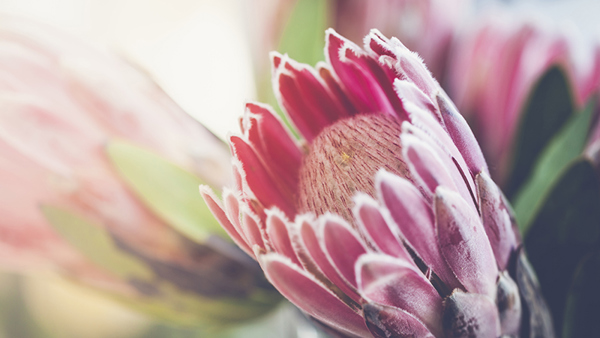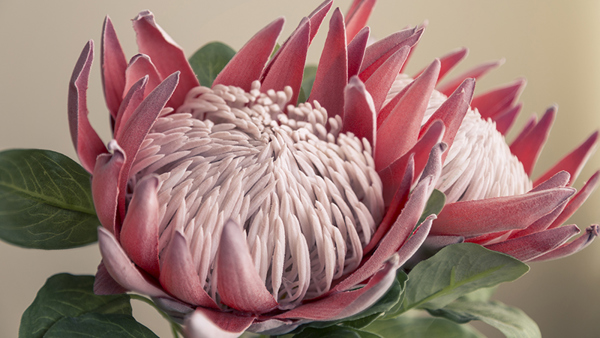Yates Account
Join now
Create a Yates account today!
Sign up to join the Yates Garden Club for monthly e-mails packed with seasonal inspiration, tips for success & exclusive promotions.
Plus if you’re a Garden Club member you can take part in the Yates Growing Community - a blog to share successes, get advice & win prizes in fun challenges along the way!

Forgot password
Enter the email address associated with your account, and we'll email you a new password.

How to grow proteas in a garden
- Choose a place in the garden that gets full sun. Prepare the planting area well by digging in Yates Dynamic Lifter Organic Plant Food.
- Dig the planting hole twice as wide and to the same depth as the root-ball.
- Carefully remove the plant from the pot ensuring not to disturb any of the roots.
- Position in hole and backfill with soil, gently firming down. Form a raised or doughnut-shaped ring of soil around the outer edge of the plant's root zone. This helps keep water where it's needed. Always water in well after planting to settle the soil around the roots and keep the soil lightly moist for several weeks while the new plant establishes.
- Mulch with an organic mulch, such as bark chips, woodchip or pea straw ensuring to keep it away from the trunk.
- Feed in autumn and spring with Yates Dynamic Lifter Organic Plant Food. TIP: For an added boost apply Yates Thrive Natural Fish & Seaweed+ Plant Food Concentrate.


How to grow proteas in a pot
Best suited for compact varieties – check the plant label for more details
- Choose a pot that is at least twice the size of the selected plant. Position in the garden that receives full sun.
- Fill the pot with a quality potting mix, such as Yates Premium Potting Mix.
- Carefully remove the plant from the pot ensuring not to disturb any of the roots.
- Position in hole and backfill with potting mix, gently firming down. Water in well.
- Mulch with an organic mulch, such as bark chips, woodchip or pea straw ensuring to keep it away from the trunk.
- Feed during the growing and flowering season with Yates Thrive Natural Fish & Seaweed+ Plant Food Concentrate.
Growing tips
- When choosing a pot for your plant always ensure that it will suit the ultimate size of the tree or shrub.
- Pruning is best done after flowering as the plant starts to produce leafy growth.
- Proteas will grow back after a hard prune but it will affect their flowering potential for the next season. For best results conduct regular light pruning.
- These plants dislike having wet feet. Ensure that the soil is well-drained and that they are not sitting in a moist soil for long periods.
- Can tolerate medium to light frost conditions.
- Many proteas prefer a soil that is slightly acidic. However there are some varieties that prefer a lightly alkaline soil. To avoid causing any issues, check the plant label for the preferred pH or try to keep the soil pH balanced at neutral around 6.5.
- Avoid feeding with a fertiliser that is high in phosphorus. Yates Dynamic Lifter Organic Plant Food is low in phosphorus and is perfect for your phosphorus sensitive plants.
- There are many different species and hybrids available. These include:
Protea ‘Pink Ice’ (P. nerifolia x P. susannae)
This is one of the most popular species on the market and often used as a cut flower due to its lovely pink shades and form. Flowers appear from late summer to mid-winter depending on location. Shrubs can grow to at least 3 metres in height which makes it a great screen or hedging shrub.
Protea compacta
A dense forming shrub with flowers appearing from winter to early spring and reaching up to 2.5 metres in height. Available in many different colours from cream to deep pinks with other hybrid varieties available as well.
Protea nerifolia
This species produces large flowers in winter in colours ranging from pink to white, all with a telltale black rim on the top. Great to use as a hedge or screen as it can reach up to 3 metres in the right conditions.
King Protea (P. cynaroides)
One of the most popular proteas is the King Protea. With its large flower bracts that form a crown-like structure around the main flower head, it is hard to miss, and is definitely a key feature in any floral displays or as a garden plant. Although their flowers are quite dominating when they make their appearance in spring to early summer, this shrub is smaller in its overall height growing to about 1.5-2 metres. Great for the container gardens.















Share
Share this article on social media